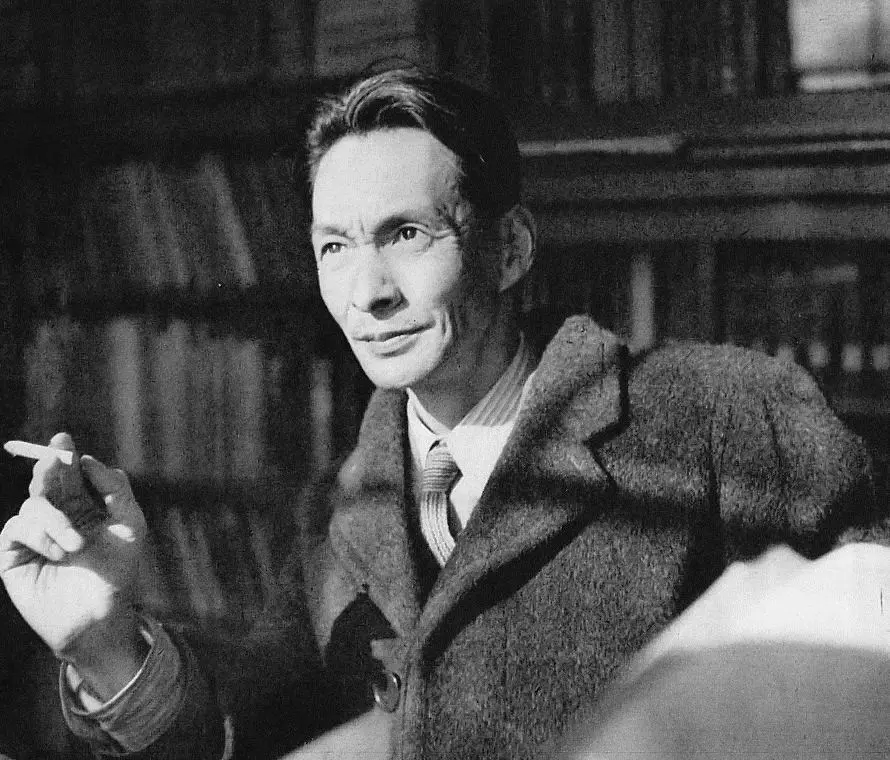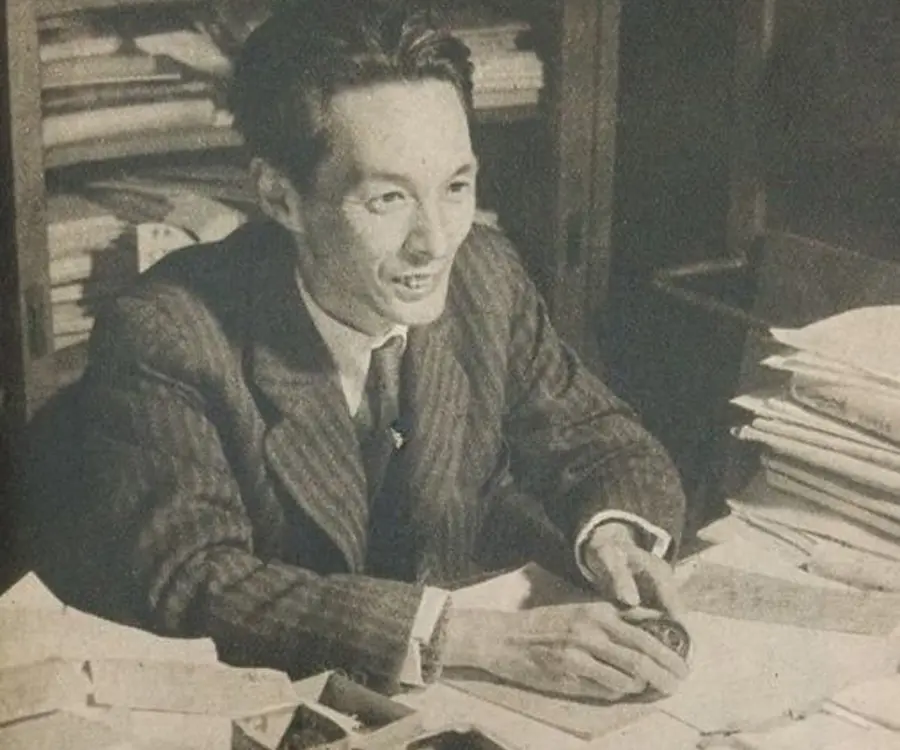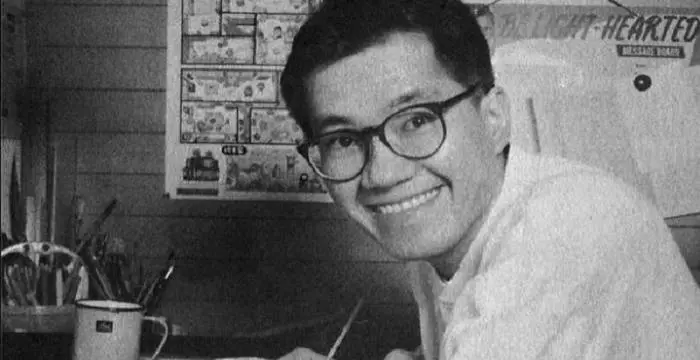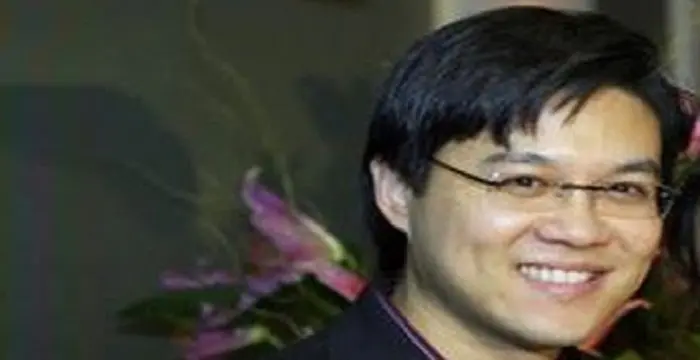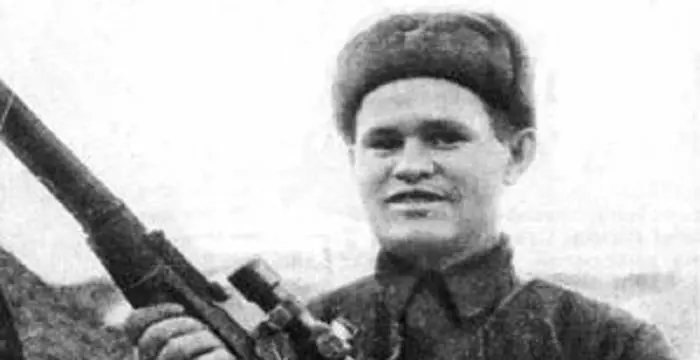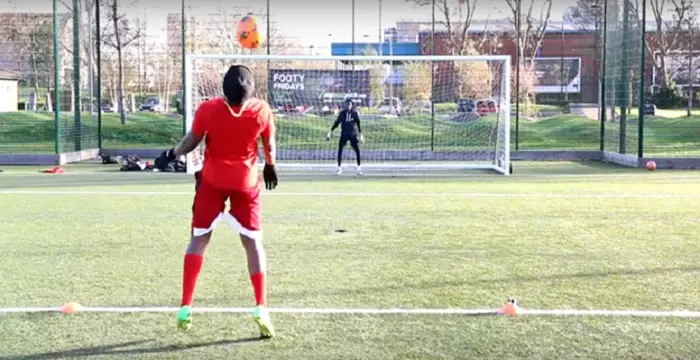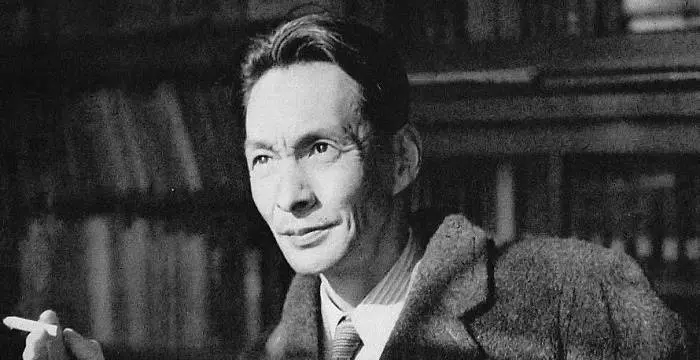
Sin-Itiro Tomonaga - Physicists, Timeline and Personal Life
Sin-Itiro Tomonaga's Personal Details
Sin'ichirō Tomonaga was a Japanese physicist who received the ‘Nobel Prize in Physics’ in 1965
| Information | Detail |
|---|---|
| Birthday | March 31, 1906 |
| Died on | July 8, 1979 |
| Nationality | Japanese |
| Famous | Scientists, Physicists |
| Spouses | Ryoko Sekiguchi |
| Universities |
|
| Birth Place | Tokyo, Japan |
| Gender | Male |
| Father | Tomonaga Sanjūrō |
| Mother | Hide Tomonaga |
| Sun Sign | Aries |
| Born in | Tokyo, Japan |
| Famous as | Physicist |
| Died at Age | 73 |
// Famous Scientists
Juliane Koepcke
Juliane Koepcke is a German-Peruvian biologist, who was the lone survivor among the 92 passengers and crew of the ill-fated LANSA Flight 508 that crashed in the Peruvian rainforest on 24 December 1971. Know more about her life in this biography.
Henry Cavendish
Henry Cavendish was a theoretical chemist and physicist, renowned for discovery of hydrogen and calculation of the mass of earth. To know more about his childhood, profile, timeline and career read on
Konstantin Tsiolkovsky
Konstantin Tsiolkovsky was a Russian rocket scientist and a pioneer of astronautics. This biography provides detailed information about his childhood, family, personal life, career, achievements, etc.
Sin-Itiro Tomonaga's photo
Who is Sin-Itiro Tomonaga?
Sin'ichirō Tomonaga was a Japanese physicist who received the ‘Nobel Prize in Physics’ in 1965 along with two American theoretical physicists, Julian Schwinger and Richard Feynman for the development of basic principles of quantum electrodynamics (QED), particularly for discovering the renormalization method. It is the theory of interactions between charged subatomic particles and electromagnetic field. Tomonaga began and completed his studies of the issues of quantum electrodynamics in the early 1940s thereby publishing his research. The covariant formulation in quantum field theory was suggested by him. His theoretical work on QED made it uniform with that of theory of special relativity – a well approved physical theory that deals with space and time relationship. However ‘Second World War’ kept him detached from scientists of the West and only after the war his theoretical work on QED was recognised by the West. Tomonaga served as professor of physics at ‘Bunrika University’, remained President of ‘Tokyo University of Education’ and was elected Chairman of ‘Japan Science Council’. He was a vigorous crusader in opposing deployment of nuclear weapons and insisted on spending resources for harmonious applications of nuclear energy. He received the highest award of Japan, ‘Order of Culture’ in 1952 and the ‘Mikhail Lomonosov Gold Medal’ from ‘Academy of Sciences’ of USSR in 1964 among numerous other awards and honours.
// Famous Physicists
Henry Cavendish
Henry Cavendish was a theoretical chemist and physicist, renowned for discovery of hydrogen and calculation of the mass of earth. To know more about his childhood, profile, timeline and career read on
Walter Kohn
Nobel Laureate Walter Kohn was an Austrian-born American theoretical chemist and physicist. Check out this biography to know about his childhood, life, achievements, works & timeline.
Nikola Tesla
Nikola Tesla was a Serbian-American inventor, best known for his development of alternating current electrical systems. This biography of Nikola Tesla provides detailed information about his childhood, life, achievements, works & timeline.
Childhood & Early Life
He was born on March 31, 1906, in Tokyo, Japan, to Tomonaga Sanjūrō and Hide Tomonaga as their second child and the eldest son. His father was a philosopher who served as a professor at ‘Shinshu University’ in Tokyo at the time of his birth.
The family relocated to Kyoto in 1913 where his father went on to serve the ‘Kyoto Imperial University’ as a professor of philosophy.
Since then he was raised in Kyoto where he joined ‘Kyoto Imperial University’ in 1926, the second oldest university of Japan and one of its National Seven Universities. It has produced ten ‘Nobel Prize’ Laureates including Hideki Yukawa, who was a classmate of Tomonaga during his undergraduate days.
In 1929 he earned Rigakushi that is a bachelor degree in physics from the university and during served as an assistant for three years. However his experience at the university was not a fulfilling one and that was accounted by him in “My Teachers, My Friends”.
Thereafter in April 1932 he joined the group of Japanese physicist Dr. Yoshio Nishina who was called ‘the founding father of modern physics research in Japan’, in latter’s Nishina Laboratory at RIKEN, a large research institute in Japan. There under the tutelage of Dr. Nishina he began working on quantum electrodynamics and completed a paper on photoelectric pair creation.
After 1935 the first five papers that he produced on the formation and complete destruction of positrons and the sixth one on neutron-proton interaction were co-authored by Dr. Nishina.
He then began to work at ‘Leipzig University’ in Leipzig, Germany and in 1937 started collaborating with the research team of German theoretical physicist Werner Heisenberg, who was one of the pioneers of quantum mechanics. There he studied quantum field theory and nuclear physics publishing a paper titled ‘Innere Reibung und Wärmeleitfähigkeit der Kernmaterie’ in ‘Zeitschrift für Physik’.
In 1939 at the outset of the ‘Second World War’ he had to return to Japan but succeeded in completing his D. Sc. degree that is Rigakuhakushi the same year. The paper he published in Leipzig was selected as his thesis at the ‘Tokyo Imperial University’.
Career
In 1940 he focussed on the meson theory and to analyse composition of meson cloud that exist around the nucleon he developed the intermediate coupling theory.
In 1941 he became a Professor of Physics at ‘Tokyo Bunrika University’.
He began serving as a part-time lecturer at ‘Tokyo Imperial University’ in 1944 and also conducted research for the navy.
During the ‘Second World War’ he studied meson theory, magnetron and his "super-many-time" theory. He worked on the theory of microwave circuits and wave guides, particularly on the concept of magnetron oscillator that is applied to produce short radio waves for radar. His contributing work on magnetron fetched him the ‘Japan Academy Prize’ along with Masao Kotani in 1948.
In 1948, Tomonaga and his students re-considered and analysed a 1939 paper of American theoretical physicist Sidney Dancoff in which the latter made effort but remained unsuccessful in showing that the infinities that arose in quantum electrodynamics can be cancelled and can give finite results.
Putting his super-many-time theory and a relativistic procedure based on the non-relativistic procedure of physicists Fierz and Wolfgang Pauli in use, he and his students speeded up and analysed the calculations.
In this way they discovered that Dancoff had failed to notice a term in the perturbation series. Once this omission was rectified the method of Dancoff gave finite results. This is how Tomonaga discovered the method of re-normalization and thereafter went on to develop a theory on QED. During such time he also calculated physical quantities like the ‘Lamb shift’.
Accepting invitation of the American theoretical physicist Robert Oppenheimer, he went to Princeton, New Jersey in 1949, to work there at the ‘Institute for Advanced Study’. There he studied a one-dimensional fermion system and triumphed in analyzing the nature of collective oscillations of a quantum-mechanical many-body system. An elementary hypothesis of quantum mechanical collective motions was published by him in 1955.
From 1949 to 1953 he held a chair at the ‘Columbia University’.
In 1950 after returning to Japan, he first proposed the Tomonaga-Luttinger liquid, which is a theoretical model that describes interacting electrons in a one dimensional conductor.
In 1951 he succeeded Dr. Nishina to become a member of ‘Science Council of Japan’. In 1963 he became President of the Council and served the position till 1969.
He played an instrumental role in setting up the ‘Institute for Nuclear Study’ at the ‘University of Tokyo’, in 1955.
The ‘Tokyo University of Education’ inducted him as its President in 1956, a position he served till 1962.
From 1957 he remained active in movements that opposed proliferation of nuclear weapons such as the Pugwash conferences.
From 1963 to 1969 he remained Director of ‘Institute of Optical Research’, ‘University of Tokyo’. He held several other significant posts in different committees of government related to scientific research and policymaking.
The 1974 book of Tomonaga titled ‘Supin wa Meguru’ (‘The Story of Spin’) gives an account of the history of nuclear physics, quantum mechanics, spin and quantum field theory. His other notable books include ‘Quantum Mechanics’ (1962) and ‘Development of Quantum Electrodynamics: Personal Recollections’ (1966).
He remained a Foreign Member of ‘Royal Swedish Academy of Sciences’, ‘German Academy of Sciences Leopoldina’ and a Foreign Associate of ‘National Academy of Science’.
Awards & Achievements
He was jointly awarded the ‘Nobel Prize in Physics’ in 1965 along with Julian Schwinger and Richard Feynman.
Personal Life & Legacy
On October 27, 1940, he married Ryoko Sekiguchi. The couple had two sons and a daughter.
Tomonaga suffered from throat cancer and passed away on July 8, 1979, in Tokyo. His remains were interred in the ‘Tama Reien Cemetery’ in Tokyo.
// Famous Japanese peoples
Akira Toriyama
Akira Toriyama is a Japanese manga artist. This biography profiles his childhood, family, personal life, achievements, etc.
Kiko Mizuhara
Kiko Mizuhara (Audrie Kiko Daniel) is an American-Japanese actress, model, and designer. This biography provides detailed information about her childhood, family, personal life, career, etc.
Robert Charles Chien
Robert Charles Chien is an entrepreneur who is married to actress Lea Salonga. Check out this biography to know about his birthday, childhood, family life, achievements and fun facts about him.
Sin-Itiro Tomonaga's awards
| Year | Name | Award |
|---|---|---|
Other | ||
| 0 | Asahi Prize (1946) | |
| 0 | Lomonosov Gold Medal (1964) | |
| 0 | Nobel Prize in Physics (1965) | |
Sin-Itiro Tomonaga biography timelines
- // 31st Mar 1906He was born on March 31, 1906, in Tokyo, Japan, to Tomonaga Sanjūrō and Hide Tomonaga as their second child and the eldest son. His father was a philosopher who served as a professor at ‘Shinshu University’ in Tokyo at the time of his birth.
- // 1913The family relocated to Kyoto in 1913 where his father went on to serve the ‘Kyoto Imperial University’ as a professor of philosophy.
- // 1926Since then he was raised in Kyoto where he joined ‘Kyoto Imperial University’ in 1926, the second oldest university of Japan and one of its National Seven Universities. It has produced ten ‘Nobel Prize’ Laureates including Hideki Yukawa, who was a classmate of Tomonaga during his undergraduate days.
- // 1929In 1929 he earned Rigakushi that is a bachelor degree in physics from the university and during served as an assistant for three years. However his experience at the university was not a fulfilling one and that was accounted by him in “My Teachers, My Friends”.
- // Apr 1932Thereafter in April 1932 he joined the group of Japanese physicist Dr. Yoshio Nishina who was called ‘the founding father of modern physics research in Japan’, in latter’s Nishina Laboratory at RIKEN, a large research institute in Japan. There under the tutelage of Dr. Nishina he began working on quantum electrodynamics and completed a paper on photoelectric pair creation.
- // 1935After 1935 the first five papers that he produced on the formation and complete destruction of positrons and the sixth one on neutron-proton interaction were co-authored by Dr. Nishina.
- // 1937He then began to work at ‘Leipzig University’ in Leipzig, Germany and in 1937 started collaborating with the research team of German theoretical physicist Werner Heisenberg, who was one of the pioneers of quantum mechanics. There he studied quantum field theory and nuclear physics publishing a paper titled ‘Innere Reibung und Wärmeleitfähigkeit der Kernmaterie’ in ‘Zeitschrift für Physik’.
- // 1939In 1939 at the outset of the ‘Second World War’ he had to return to Japan but succeeded in completing his D. Sc. degree that is Rigakuhakushi the same year. The paper he published in Leipzig was selected as his thesis at the ‘Tokyo Imperial University’.
- // 1939 To 1948In 1948, Tomonaga and his students re-considered and analysed a 1939 paper of American theoretical physicist Sidney Dancoff in which the latter made effort but remained unsuccessful in showing that the infinities that arose in quantum electrodynamics can be cancelled and can give finite results.
- // 1940In 1940 he focussed on the meson theory and to analyse composition of meson cloud that exist around the nucleon he developed the intermediate coupling theory.
- // 27th Oct 1940On October 27, 1940, he married Ryoko Sekiguchi. The couple had two sons and a daughter.
- // 1941In 1941 he became a Professor of Physics at ‘Tokyo Bunrika University’.
- // 1944He began serving as a part-time lecturer at ‘Tokyo Imperial University’ in 1944 and also conducted research for the navy.
- // 1948During the ‘Second World War’ he studied meson theory, magnetron and his "super-many-time" theory. He worked on the theory of microwave circuits and wave guides, particularly on the concept of magnetron oscillator that is applied to produce short radio waves for radar. His contributing work on magnetron fetched him the ‘Japan Academy Prize’ along with Masao Kotani in 1948.
- // 1949 To 1955Accepting invitation of the American theoretical physicist Robert Oppenheimer, he went to Princeton, New Jersey in 1949, to work there at the ‘Institute for Advanced Study’. There he studied a one-dimensional fermion system and triumphed in analyzing the nature of collective oscillations of a quantum-mechanical many-body system. An elementary hypothesis of quantum mechanical collective motions was published by him in 1955.
- // 1949 To 1953From 1949 to 1953 he held a chair at the ‘Columbia University’.
- // 1950In 1950 after returning to Japan, he first proposed the Tomonaga-Luttinger liquid, which is a theoretical model that describes interacting electrons in a one dimensional conductor.
- // 1955He played an instrumental role in setting up the ‘Institute for Nuclear Study’ at the ‘University of Tokyo’, in 1955.
- // 1956 To 1962The ‘Tokyo University of Education’ inducted him as its President in 1956, a position he served till 1962.
- // 1957From 1957 he remained active in movements that opposed proliferation of nuclear weapons such as the Pugwash conferences.
- // 1963 To 1969From 1963 to 1969 he remained Director of ‘Institute of Optical Research’, ‘University of Tokyo’. He held several other significant posts in different committees of government related to scientific research and policymaking.
- // 1965He was jointly awarded the ‘Nobel Prize in Physics’ in 1965 along with Julian Schwinger and Richard Feynman.
- // 8th Jul 1979Tomonaga suffered from throat cancer and passed away on July 8, 1979, in Tokyo. His remains were interred in the ‘Tama Reien Cemetery’ in Tokyo.
// Famous Aries Celebrities peoples
Skai Jackson
Skai Jackson is an American child actress with huge fan following. Find more about her family & personal life, relationships, facts and more.
Shemar Moore
Shemar Moore is a model turned actor best known for his role in the television series ‘The Young and the Restless’. This biography of Shemar Moore provides detailed information about his childhood, life, achievements, works & timeline.
Vasily Zaytsev
Vasily Zatysev was a Russian sniper who served during the World War II. Check out this biography to know about his childhood, family life, achievements and fun facts about him.
Ivey Meeks
Ivey Meeks is an American YouTube star and model. Let’s have a look at her family and personal life including age, date of birth, net worth, boyfriends and fun facts.
Tobi Lerone
Check out all that you wanted to know about Tobi Lerone, the famous YouTube Personality and gamer; his birthday, his family and personal life, his girlfriends, fun trivia facts and more.
Simone Signoret
Simone Signoret was a French actress who became the first French person to win an Academy Award. Check out this biography to know about her childhood, family life, achievements and other facts related to her life.
Sin-Itiro Tomonaga's FAQ
What is Sin-Itiro Tomonaga birthday?
Sin-Itiro Tomonaga was born at 1906-03-31
When was Sin-Itiro Tomonaga died?
Sin-Itiro Tomonaga was died at 1979-07-08
Where was Sin-Itiro Tomonaga died?
Sin-Itiro Tomonaga was died in Tokyo, Japan
Which age was Sin-Itiro Tomonaga died?
Sin-Itiro Tomonaga was died at age 73
Where is Sin-Itiro Tomonaga's birth place?
Sin-Itiro Tomonaga was born in Tokyo, Japan
What is Sin-Itiro Tomonaga nationalities?
Sin-Itiro Tomonaga's nationalities is Japanese
Who is Sin-Itiro Tomonaga spouses?
Sin-Itiro Tomonaga's spouses is Ryoko Sekiguchi
What was Sin-Itiro Tomonaga universities?
Sin-Itiro Tomonaga studied at Kyoto Imperial University
Who is Sin-Itiro Tomonaga's father?
Sin-Itiro Tomonaga's father is Tomonaga Sanjūrō
Who is Sin-Itiro Tomonaga's mother?
Sin-Itiro Tomonaga's mother is Hide Tomonaga
What is Sin-Itiro Tomonaga's sun sign?
Sin-Itiro Tomonaga is Aries
How famous is Sin-Itiro Tomonaga?
Sin-Itiro Tomonaga is famouse as Physicist



